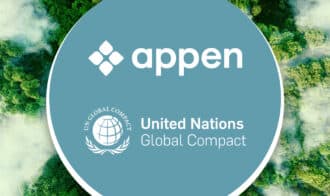Providing Microwork Opportunities Around the World
Microwork breaks complex tasks down into fractional tasks that take just minutes to complete. Speed and volume are critical components to successful microworking. While the tasks are small, the global microwork job market has grown to more than $1 billion in the last decade. Microwork has captured the interest of youth across Africa. In Kenya, those engaged in microwork tasks can earn upwards of 40% more than the average urban income. Microwork is not only making new jobs that can be done remotely but jobs that pay more than local work.Mercy Corps Ventures in Kenya
To better understand microwork and its effect on a local population, Mercy Corps Ventures completed a study of microworkers in Kenya. These workers were completing crowdsourced microtasks provided by Appen as well as Valora, Celo, Kotani Pay, and Corsali.Crowdsourced Microtasks
Crowdsourced microtasks are a specific type of microwork. This model works by distributing microtasks to part-time freelancers. Anyone with a profile and minimum quality rating can complete tasks and receive payment. One of the benefits of this type of work is that it can be done at any time of day, from anywhere in the world, and be completed using only a mobile device. At Appen, we offer crowdsource microtasks to workers around the world on thousands of different projects. We worked with Mercy Corps Ventures to provide tasks to microworkers in their study. To ensure quality, we add random quality checks interspersed throughout tasks. These quality checks ensure that the work meets our standards and provides workers with a quality rating. The crowdsourced microtask model is highly efficient as it requires minimal infrastructure while providing ample opportunity to microworkers and maintaining data quality. This type of microwork model is flexible and scalable.
The Benefits of Microwork and Stablecoins
The goal of Mercy Corps Ventures study was to find out if and how microwork can benefit global workers. The study found a number of benefits for global microworkers.Stablecoins Lower Transaction Fees
One of the most important benefits to come out of this research study was that using stablecoin payments significantly lowered the cost of transaction fees, increasing the take-home pay for microworkers. Using stablecoins lowers the friction and cost of sending and receiving cross-border micropayments. The transaction fee goes from 28.8% for USD $5.00 to 2.02%, no matter the transaction value. On a $5 transaction, that reduces the cost from $1.44 to $0.10.Affordability Opens New Opportunities for Un/Underemployed
By making transaction fees more affordable through the use of stablecoins, microwork opportunities become more lucrative for people around the world. The use of stablecoins opens up a new way of working for those who need it most. As more un- and under-employed people seek out digital microwork, more people will be lifted out of poverty and will receive a living wage in their area. According to Appen’s Crowd Pulse survey, 16% of our contributors were living under the global poverty line. Since joining the platform, 77% of those contributors have been lifted above the global poverty line.Incentivizes Savings Behavior
Another benefit that researchers found from this study was that stablecoin-based digital wallets could be used to incentivize savings behavior. The stablecoin wallet not only offered those who were previously unbanked a place to store money, but it could provide lessons and encouragement to save money. By providing rewards for saving money instead of spending it, the digital wallet provided education and incentive to save.Improves Earnings for Un/Underemployed
The most important outcome from this research was that microwork and lower transaction fees from the use of stablecoins increased earnings for the un/underemployed. When study participants were asked for their feedback:- 97% said they agreed that they received a fair reward for completed microtasks
- 77% reported higher earnings when compared to their previous income-generating activities
- 95% of participants reported an improved quality of life
- 94% reported their income had increased because of the 5-weeks of work included in this pilot study
Increases Skills
In addition to receiving greater income, microworkers are also learning new skills and gaining experience. Microworkers are learning how to:- Work online
- Manage time
- Save money
- Solve challenges with the support of peers in WhatsApp groups












